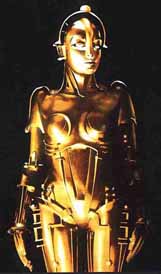Utopias and Dystopias
Images of us in action, giving evidence for our claims…
What is a utopia and a dystopia?
Three questions:
1. What genre is the novel?
2. What technologies of representation does this novel use?
3. How can we best represent the novel (its themes, etc.)?
Utopia: not place–no place; eutopia–ideal place
Dystopia: bad utopia
Anti-utopia: was supposed to be utopia but becomes dystopic
Genres:
Speculative fiction
-grounded in a world we recognize
-conceivable option for the future
-differentiated from sci fi mostly from absence of or lack of focus on technology
-inverted historical fiction–book could be our present
-incarcerated fiction as opposed to “escapist”
Social science fiction/political science fiction (related to speculative fiction)
-science fiction is about “what ifs”
-thinking about the practice of social scientists
-extrapolation of existing conditions
Critical satire/Satire
-not a direct link to society’s problems–i.e. infertility not connected directly to toxic waste
-parallel vision of a world that already exists, but absurd
-not a no-place
-used to point out our own faults
Speculative sociological dystopia
-examines what would happen if we “mechanized” humans
Memoir
-internal monologue
-more about Offred’s story and not about the surrounding society
-we have to take whatever she says for what it is
Science fiction/science of government
-broad definition
-concept of warped reality
-between fiction and nonfiction
-rooted in our own world
“gendering our book” or putting it into categories
language as passing
naming/categorizing dictates how you think about something–recognize that categories are flawed, see their limits
are we cogs in a giant machine?
witch hunt aspects of media–>vigilantism

![Reblog this post [with Zemanta]](http://img.zemanta.com/reblog_e.png?x-id=073740ca-c837-4376-abfb-ad4b4844c2e5)

Comments are closed.